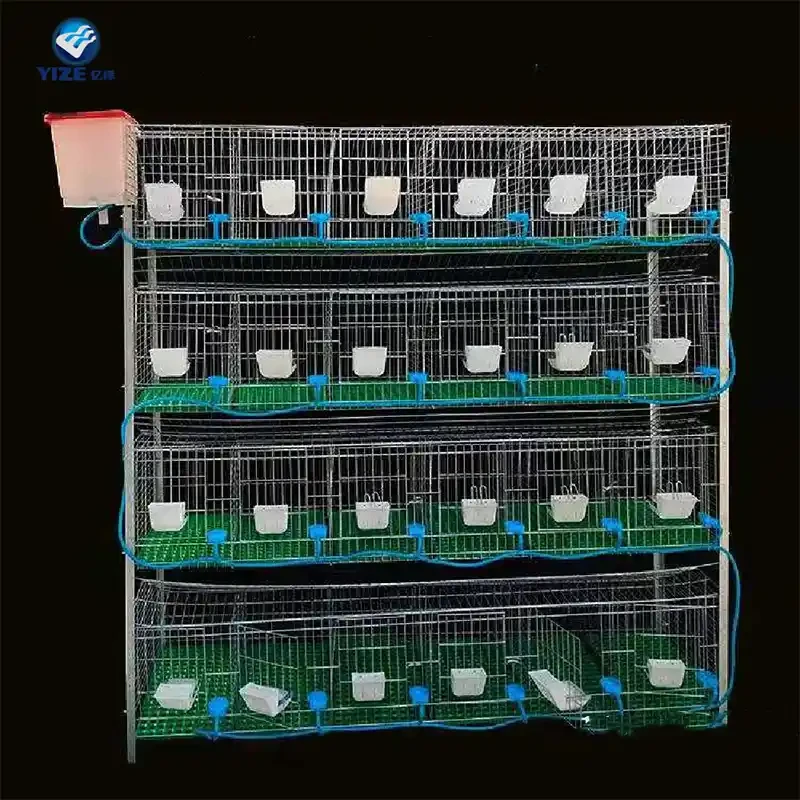Sustainable Chicken Farming for Healthier Livestock and Environment
Dec . 29, 2024 21:44 Back to list
Sustainable Chicken Farming for Healthier Livestock and Environment
The Right Poultry Farm Establishing a Sustainable and Profitable Operation
In recent years, poultry farming has become increasingly popular due to its high demand for chicken, eggs, and other poultry products. However, starting and managing a successful poultry farm requires a myriad of considerations, from choosing the right breed of birds to adopting sustainable practices that ensure long-term profitability and environmental responsibility. This article will explore essential aspects of establishing the right poultry farm, focusing on breed selection, housing, nutrition, and biosecurity measures.
Choosing the Right Breeds
The first step in starting a poultry farm is selecting the right breeds. Different poultry birds serve various purposes; for instance, broilers are raised for meat production, while layers are bred for egg production. It is essential to consider the local climate, market demand, and production goals when selecting breeds. For example, if the goal is to produce organic eggs, heritage breeds such as Rhode Island Reds or Sussex chickens may be ideal due to their hardiness and ability to thrive in free-range conditions. In contrast, commercial breeds like Cobb or Ross are better suited for meat production due to their rapid growth rates.
Housing and Infrastructure
Proper housing is vital for the health and productivity of poultry. The design of the poultry house should ensure adequate ventilation, temperature control, and protection from predators. Free-range systems allow birds to roam outdoors, promoting natural behaviors and reducing stress. However, this approach requires secure fencing and shelter to protect the birds from harsh weather conditions and predators. On the other hand, battery cage systems, once common in egg production, have come under scrutiny for animal welfare concerns. Many consumers now prefer eggs from farms that provide enriched cages or free-range alternatives.
Regardless of the system chosen, ensuring the poultry house has proper flooring, nesting boxes (for layers), and adequate space per bird is essential for preventing overcrowding and promoting a healthy environment. The recommended space varies by breed, but generally, broilers require about 0.8 square feet per bird, while layers need approximately 1.5 to 2 square feet.
Nutrition Feeding for Success
Nutrition is another critical component of successful poultry farming. Birds require a balanced diet that includes carbohydrates, proteins, vitamins, and minerals to grow and lay eggs efficiently. Commercial feeds formulated for specific poultry types are widely available and provide the necessary nutrients. It is also beneficial to incorporate supplementary feeds, such as grains, kitchen scraps, and green forage, to enhance the birds' diets and reduce feed costs.
right poultry farm

Water is equally important; clean, fresh water must be available at all times to ensure optimal growth and egg production. Implementing a proper feeding and watering system contributes significantly to the overall productivity of the poultry farm.
Biosecurity Measures
Maintaining biosecurity is crucial for preventing disease outbreaks that can devastate poultry populations. Biosecurity measures include restricting access to the farm, implementing thorough sanitation practices, and regularly monitoring the health of flocks. Visitors should be required to wear protective clothing and footwear to minimize the risk of introducing pathogens.
Regular vaccinations and health checks are also essential in keeping birds healthy. Farmers should work closely with veterinarians to establish vaccination schedules and monitor flock health closely. Early identification of sick birds can prevent the spread of disease and mitigate potential losses.
Sustainable Practices
Finally, embracing sustainability in poultry farming is increasingly important. Sustainable practices not only enhance profitability but also contribute positively to the environment. Farmers can adopt practices such as rotational grazing, organic feeds, and waste recycling to reduce their environmental impact. By composting manure and using it as a natural fertilizer, poultry farmers can enrich their soils while minimizing waste.
Additionally, adopting renewable energy sources, such as solar panels, can reduce operational costs and environmental footprints. Sustainable poultry farming addresses the growing consumer demand for ethically produced food while ensuring the longevity and viability of the farming operation.
Conclusion
Establishing the right poultry farm requires careful planning, knowledge, and commitment to best practices. By selecting suitable breeds, providing adequate housing and nutrition, maintaining strict biosecurity, and embracing sustainability, poultry farmers can create successful, sustainable operations that meet the demands of today’s market while promoting animal welfare and environmental stewardship. As the poultry industry continues to evolve, those who adapt and innovate will undoubtedly thrive in this dynamic field.
-
Hot Sale 24 & 18 Door Rabbit Cages - Premium Breeding Solutions
NewsJul.25,2025
-
Automatic Feeding Line System Pan Feeder Nipple Drinker - Anping County Yize Metal Products Co., Ltd.
NewsJul.21,2025
-
Automatic Feeding Line System Pan Feeder Nipple Drinker - Anping County Yize Metal Products Co., Ltd.
NewsJul.21,2025
-
Automatic Feeding Line System - Anping Yize | Precision & Nipple
NewsJul.21,2025
-
Automatic Feeding Line System - Anping Yize | Precision & Nipple
NewsJul.21,2025
-
Automatic Feeding Line System-Anping County Yize Metal Products Co., Ltd.|Efficient Feed Distribution&Customized Animal Farming Solutions
NewsJul.21,2025






